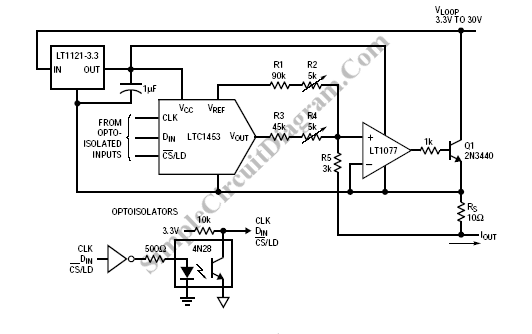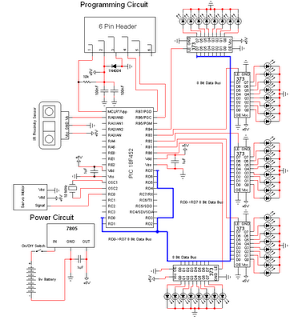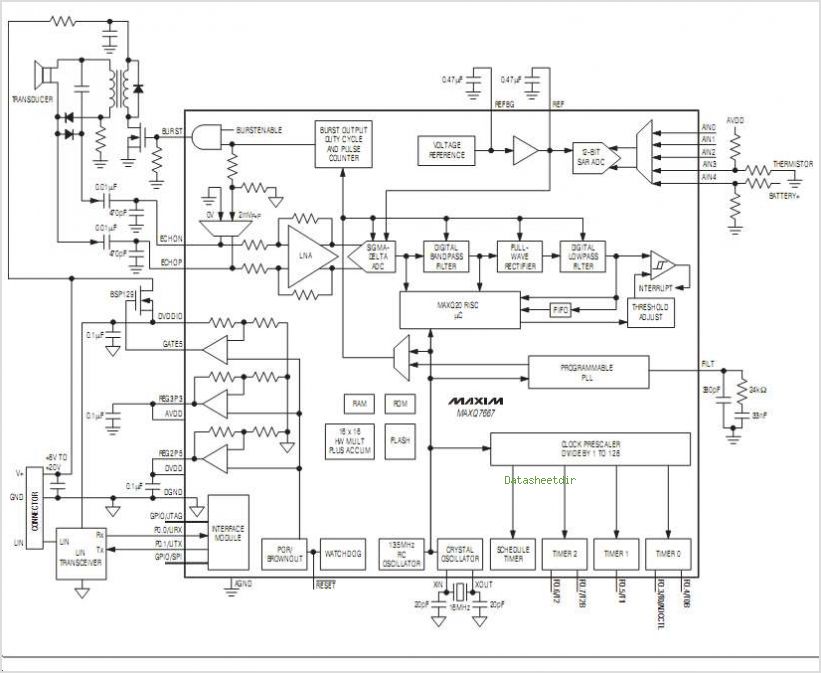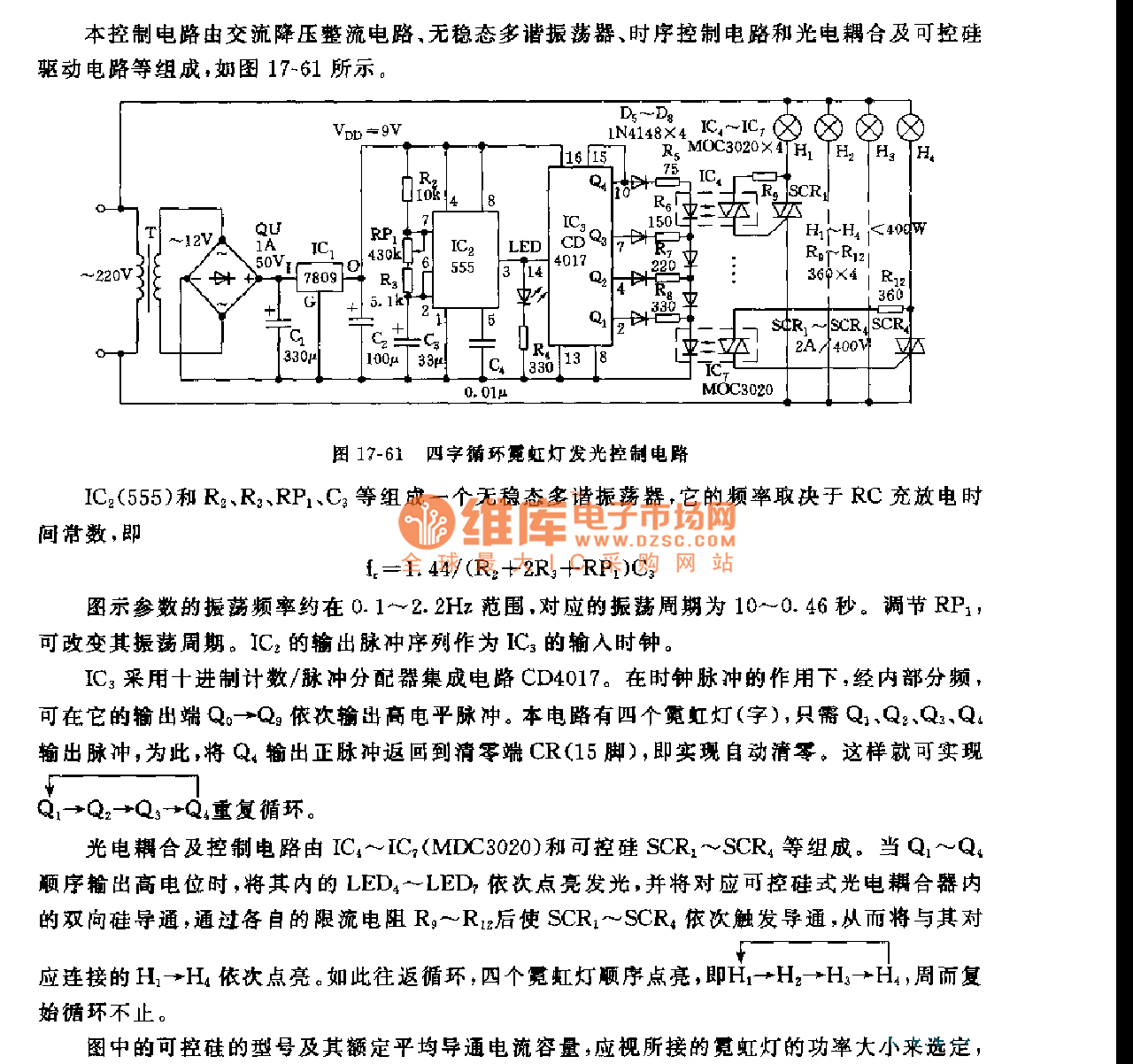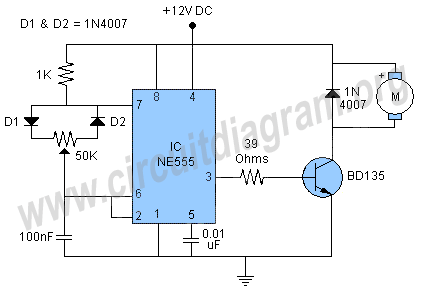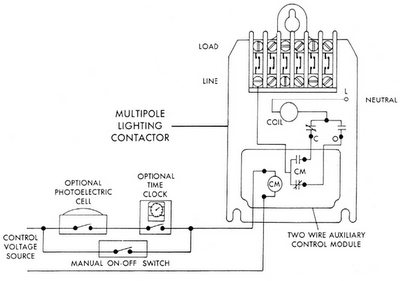
Remote Control Tester
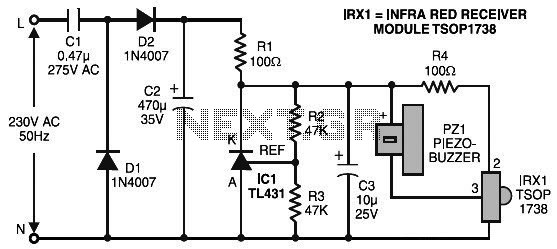
The remote control tester circuit is a simple and easy-to-construct device for verifying the basic operations of an infrared remote control unit. It is low-cost and designed around infrared technology.
The remote control tester circuit typically consists of a photodiode or phototransistor, which is sensitive to infrared light emitted by the remote control. When the remote is activated, it emits infrared signals that the photodiode detects. The circuit may also include an LED indicator that lights up when infrared signals are detected, providing a visual confirmation of the remote's functionality.
A basic schematic of this circuit would include the following components:
- **Photodiode/Phototransistor**: This component is the heart of the circuit. It converts the incoming infrared light into an electrical signal. The choice between a photodiode and a phototransistor depends on the desired sensitivity and response time.
- **Resistor**: A resistor is connected in series with the photodiode to limit the current flowing through it, ensuring that it operates within safe limits.
- **LED**: The LED serves as an indicator. When the photodiode detects infrared light, it generates a voltage that is sufficient to forward-bias the LED, causing it to illuminate.
- **Power Supply**: The circuit requires a power source, which can be a simple battery or a DC power supply, depending on the design requirements.
The layout of the circuit should ensure that the photodiode is positioned to receive the infrared signals directly from the remote control, while the LED is placed in a visible location for easy observation. The simplicity of this circuit makes it an excellent project for beginners in electronics, allowing them to understand the principles of infrared communication and basic circuit design.
In summary, this remote control tester circuit is an effective tool for quickly checking the operational status of infrared remote controls, making it a valuable addition to any electronics toolkit.Here is the remote control tester circuit. This circuit is really a simple and easy tester for verifying the basic operations of an infrared remote control unit. It is low-cost and very easy to construct. The tester is designed around infra. 🔗 External reference
The remote control tester circuit typically consists of a photodiode or phototransistor, which is sensitive to infrared light emitted by the remote control. When the remote is activated, it emits infrared signals that the photodiode detects. The circuit may also include an LED indicator that lights up when infrared signals are detected, providing a visual confirmation of the remote's functionality.
A basic schematic of this circuit would include the following components:
- **Photodiode/Phototransistor**: This component is the heart of the circuit. It converts the incoming infrared light into an electrical signal. The choice between a photodiode and a phototransistor depends on the desired sensitivity and response time.
- **Resistor**: A resistor is connected in series with the photodiode to limit the current flowing through it, ensuring that it operates within safe limits.
- **LED**: The LED serves as an indicator. When the photodiode detects infrared light, it generates a voltage that is sufficient to forward-bias the LED, causing it to illuminate.
- **Power Supply**: The circuit requires a power source, which can be a simple battery or a DC power supply, depending on the design requirements.
The layout of the circuit should ensure that the photodiode is positioned to receive the infrared signals directly from the remote control, while the LED is placed in a visible location for easy observation. The simplicity of this circuit makes it an excellent project for beginners in electronics, allowing them to understand the principles of infrared communication and basic circuit design.
In summary, this remote control tester circuit is an effective tool for quickly checking the operational status of infrared remote controls, making it a valuable addition to any electronics toolkit.Here is the remote control tester circuit. This circuit is really a simple and easy tester for verifying the basic operations of an infrared remote control unit. It is low-cost and very easy to construct. The tester is designed around infra. 🔗 External reference
Warning: include(partials/cookie-banner.php): Failed to open stream: Permission denied in /var/www/html/nextgr/view-circuit.php on line 713
Warning: include(): Failed opening 'partials/cookie-banner.php' for inclusion (include_path='.:/usr/share/php') in /var/www/html/nextgr/view-circuit.php on line 713
